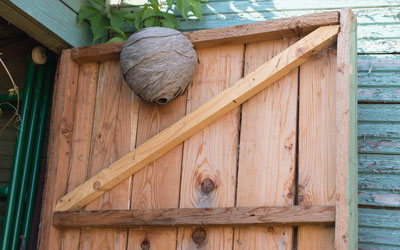
4 Tips to Prevent Ticks
There are several things you can do to lessen the risk of getting ticks this summer. These include:
- Investing in tick prevention
- Consider speaking to your veterinarian about tick prevention methods. Some may have suggestions or solutions for keeping your pets safe.
- Keeping a tidy, pest-proof yard
- Mow your lawn regularly and trim bushes or trees on a regular basis.
- In addition, implement pest exclusion to keep rodents out as they often carry ticks.
- Inspecting pets and family members
- Whenever you take your pets outdoors, make sure to inspect them for ticks. Pay close attention to areas behind the ears, neck, and under the legs. In addition, check your children for ticks after hikes.
- Avoiding areas with tall grass or vegetation
- Ticks are known to be in areas with high grass or vegetation. Be careful to stay on trails when hiking or walking.
Do Ticks Bite Dogs?
Just as they would with people, ticks can easily latch onto and feed on dogs. They are less likely to do so on cats, as cat grooming behavior can expel them. In some animals, ticks have been known to cause anemia. The main danger is, of course, contracting Lyme disease. Ticks may feed for anywhere from a few hours to a few days, making it important to check your pets every time they’ve been outside.
Dogs can be seriously affected by Lyme disease and will begin to show several symptoms if affected. Always be on the lookout for signs of depression, loss of appetite, fever, lameness, or swollen joints and lymph nodes. If you notice any of these symptoms, immediately take your pet to see a veterinarian.
What to Do When You Have Ticks
Ticks need to be removed as soon as they are noticed. If you or your pet exhibits any symptoms, it’s crucial to receive medical attention as soon as possible. In general, always be on the lookout for ticks on your family and pets, especially after spending time outdoors. For more tick prevention tips, contact the team at Western today!
 Blooming flowers and warm weather is enjoyed by all in Washington summertimes, including wasps. These stinging insects come out in full force this time of year, making it likely you’ll come across them when you spend time outdoors. Wasps are generally safe, unless they build nests on or near your property. There are a few different types of wasps, and they all build different types of nests.
Blooming flowers and warm weather is enjoyed by all in Washington summertimes, including wasps. These stinging insects come out in full force this time of year, making it likely you’ll come across them when you spend time outdoors. Wasps are generally safe, unless they build nests on or near your property. There are a few different types of wasps, and they all build different types of nests.